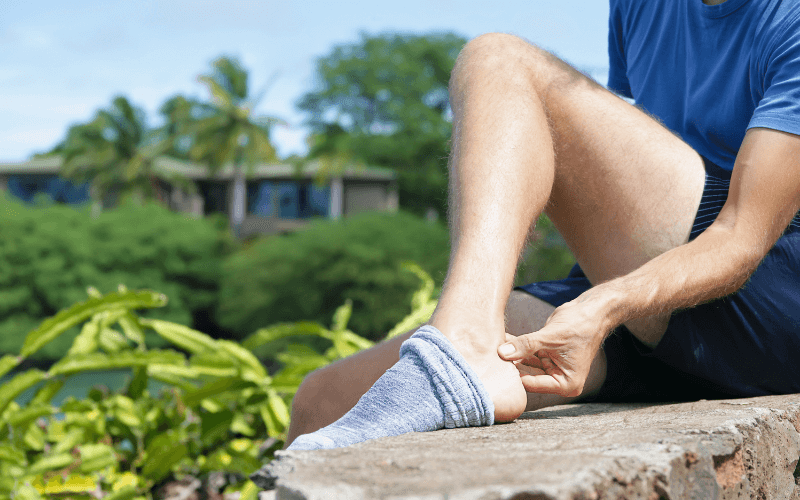The Achilles tendon is a thick band of tissue that connects your heel bone to the calf muscle. It’s the biggest and strongest tendon in your body, and it helps to move and control your foot. However, constant pressure leaves it susceptible to inflammation and injury – a painful situation that’s sure to hamper your ability to walk, run, climb and jump.
What Are the Symptoms of Achilles Tendonitis?
It’s important to note that these symptoms tend to be mild at first but will undoubtedly get worse if you ignore them.
- A mild ache or sharp pain just above the ankle or along the length of the tendon. This is likely to be worse after exercise, or simply walking.
- There may also be pain during exercise or any movement – going up stairs or walking uphill, for example.
- Stiffness and/or swelling in the tendon or at the back of the ankle. This is most common when you’ve been resting for a while or first thing in the morning.
- Tenderness if you press or touch the tendon.
- A crunching or creaking noise or sensation (crepitus) when you move your ankle.
Over time continued pressure on the tendon causes the fibrous tissues to fray and tear. The tendon can even snap altogether, and if this happens you’ll struggle to put any weight on that leg at all.
What Causes Achilles Tendonitis?
1. Overuse
This is the most common cause. High-impact activities (running, jumping or dancing, for example) place the Achilles tendon under constant pressure. You’re at risk of injury whether you’re a professional sportsperson or an enthusiastic amateur.
Overuse injuries also affect people whose work is strenuous and physical – construction workers, people in the military and airport personnel who are constantly walking, for example.
2. Inadequate Footwear
Your footwear must provide sufficient cushioning and support for your activity. Indeed, this is necessary even if you’re just going to the shops. Without the right shoes, your joints and soft tissues are placed under additional strain, and injury is sure to follow.
3. Poor Technique
It’s essential to gradually build up to a new activity and to do it correctly. Charging around the gym without learning how to use the equipment properly will do far more harm than good. This is how tendon strains and tears occur.
3. Medical Conditions
Chronic conditions such as diabetes, rheumatoid arthritis or thyroid problems can leave your soft tissues vulnerable to injury.
4. Weight Problems
If you have issues with your weight, you’ll be putting additional strain on your lower limbs, and this will lead to problems over time.
5. Age-Related Problems
Tendons grow less flexible as we age, which makes it far too easy for injuries to occur. However, the right exercises help to keep joints and soft tissues strong and pliable.
How to Treat Achilles Tendonitis
Fortunately, there are several ways to treat this painful condition. Your podiatrist will guide you through the best approach, depending on your situation. Here are some of the possible methods:
- R.I.C.E method (rest, ice, compress, elevate)
- Change to more supportive footwear.
- Use custom orthotics to aid cushioning, posture and balance.
- Massage and stretching to ease pain, strengthen the tissues and increase flexibility.
- Extracorporeal Shock Wave Therapy (ESWT) reduces pain, increases blood circulation and triggers the healing process.
- Anti-inflammatory medication such as Ibuprofen (always consult a healthcare professional before taking any medication).
Reassuring Help at Feet By Pody
Don’t struggle with Achilles tendon problems alone. Our experienced podiatrists will find the right approach for you.
Talk to the friendly team at one of our London-based foot clinics.

